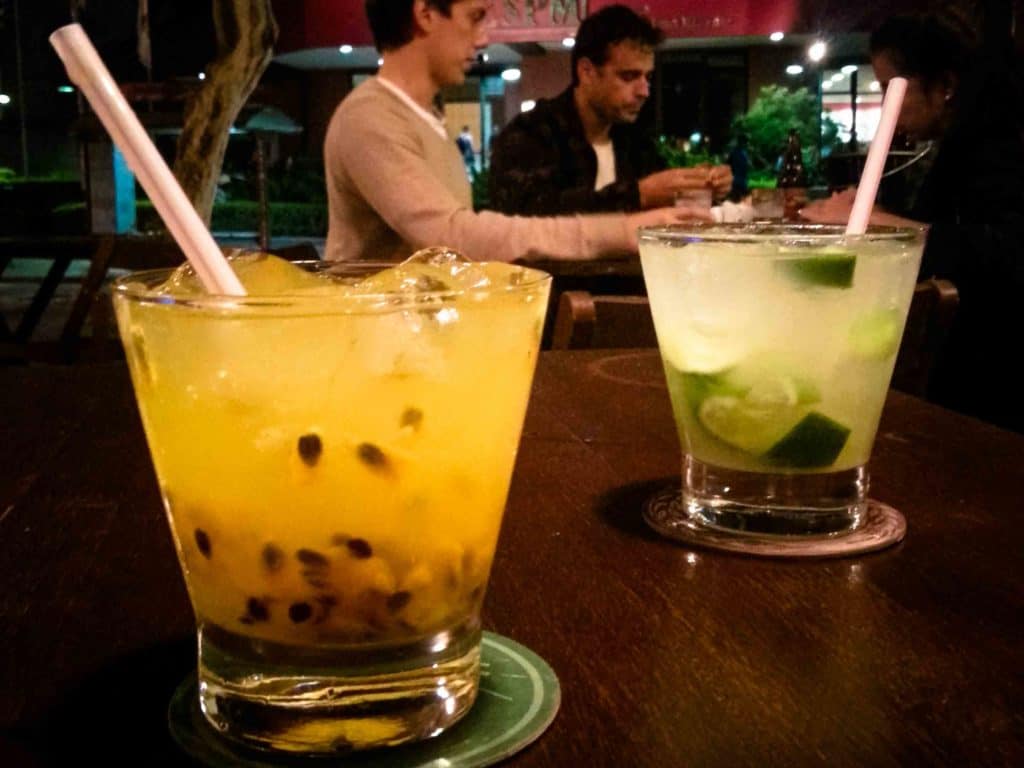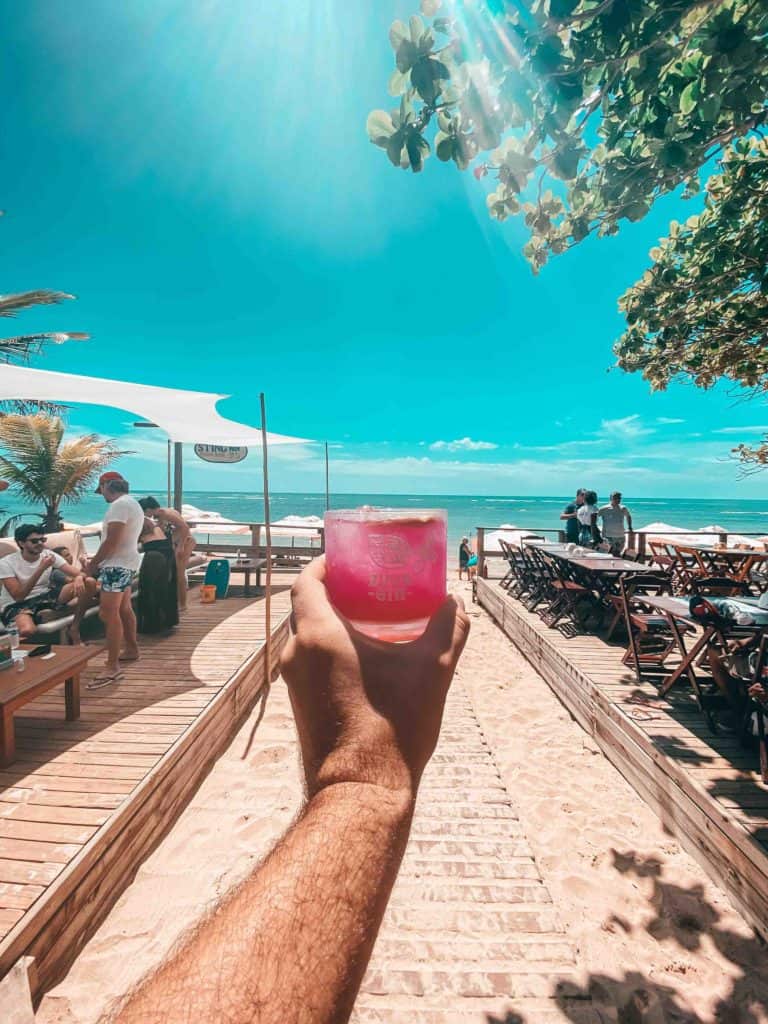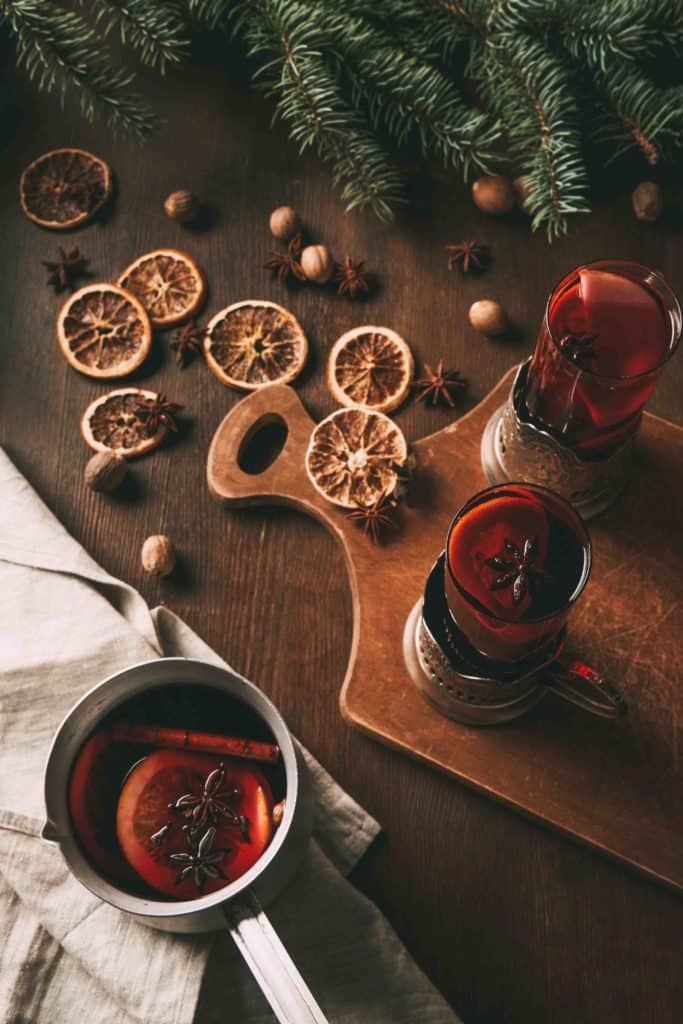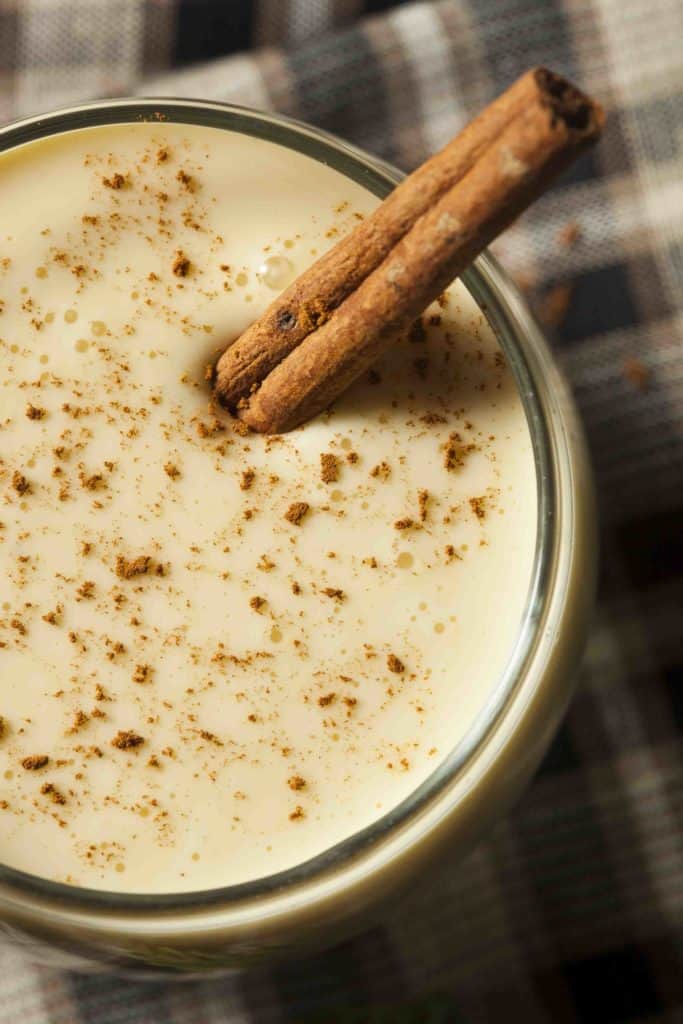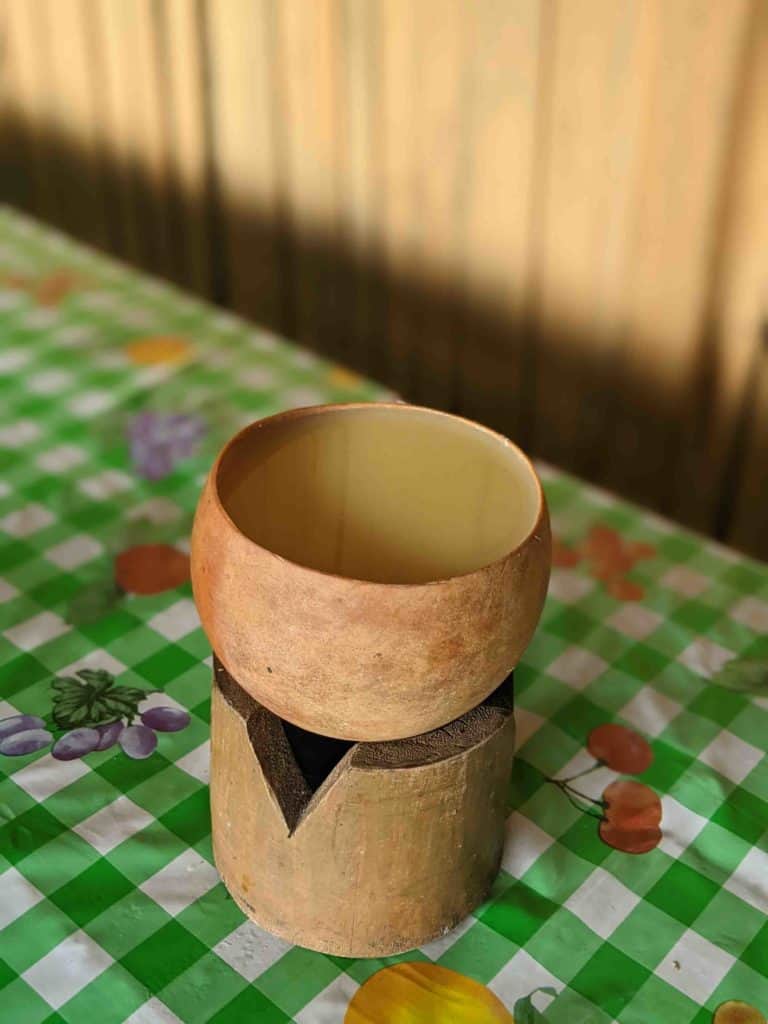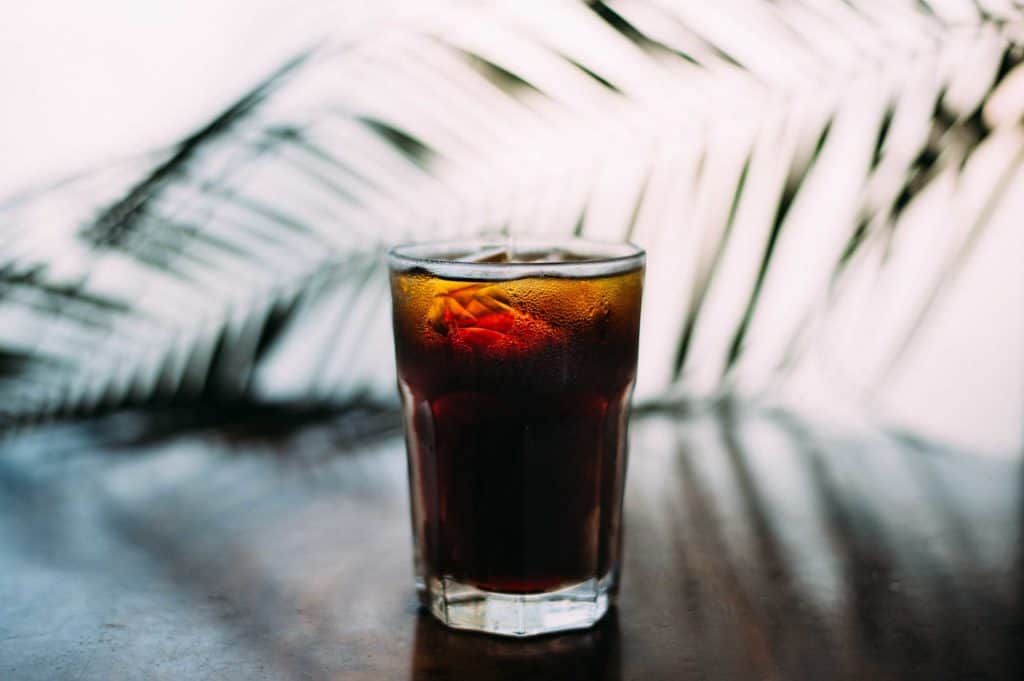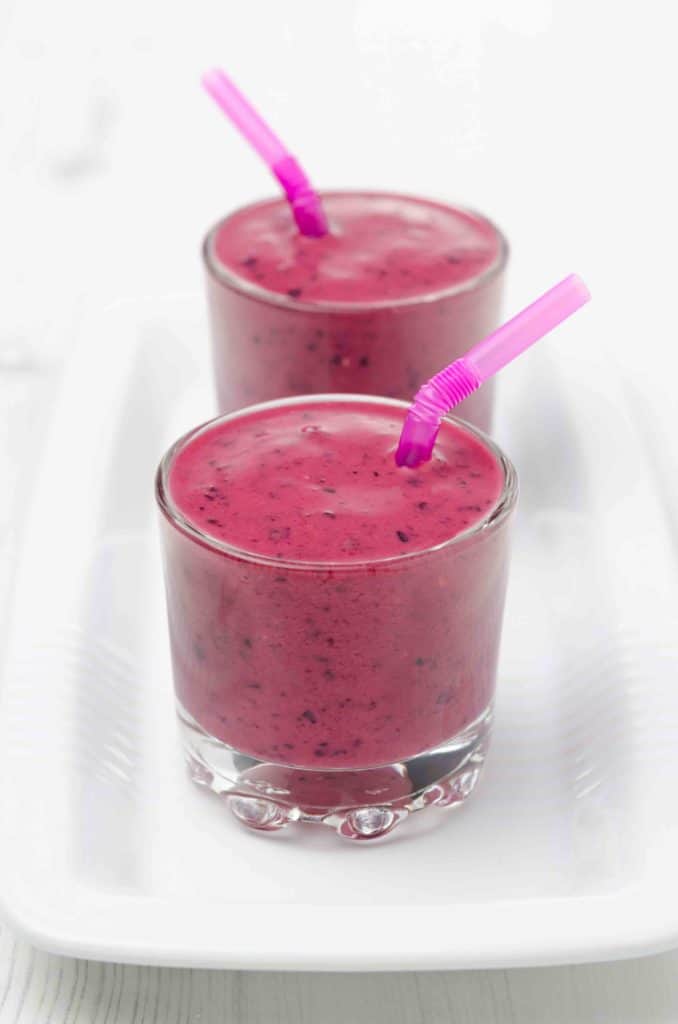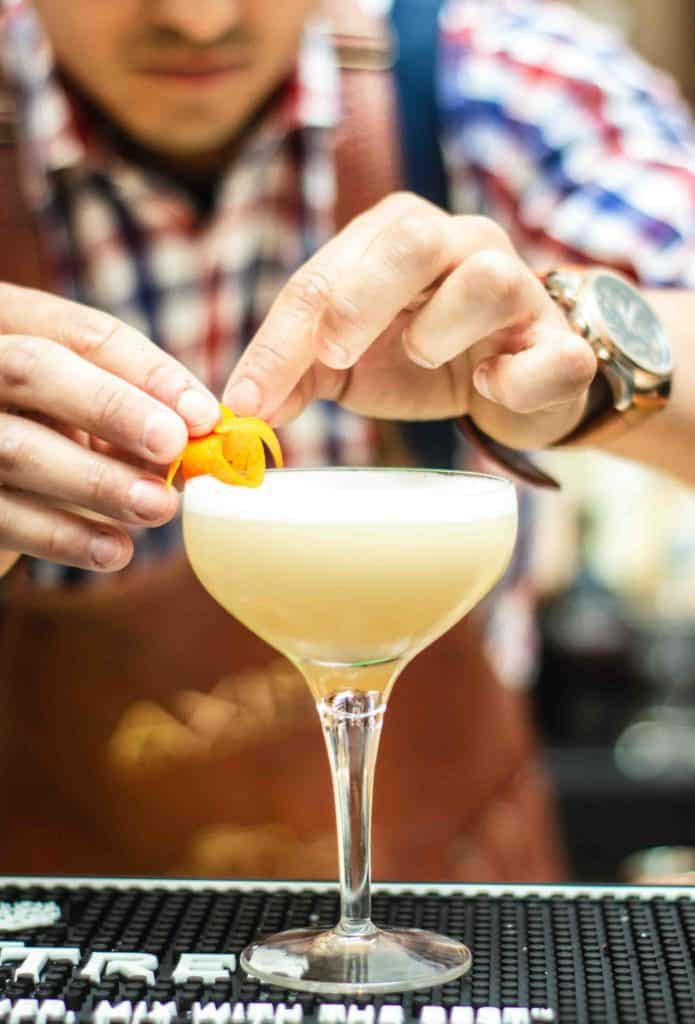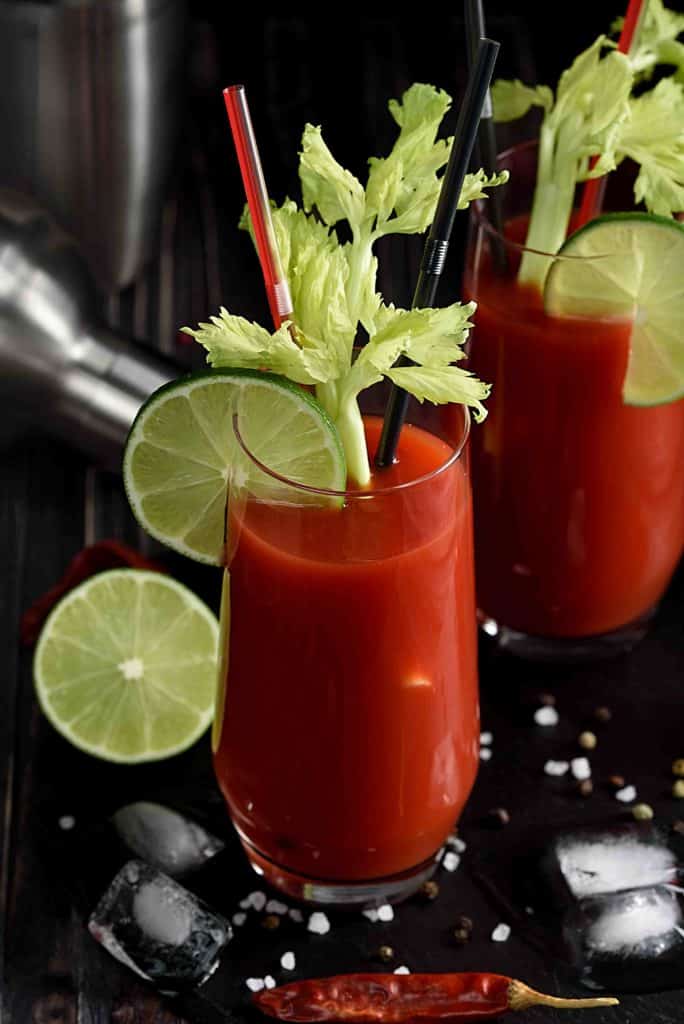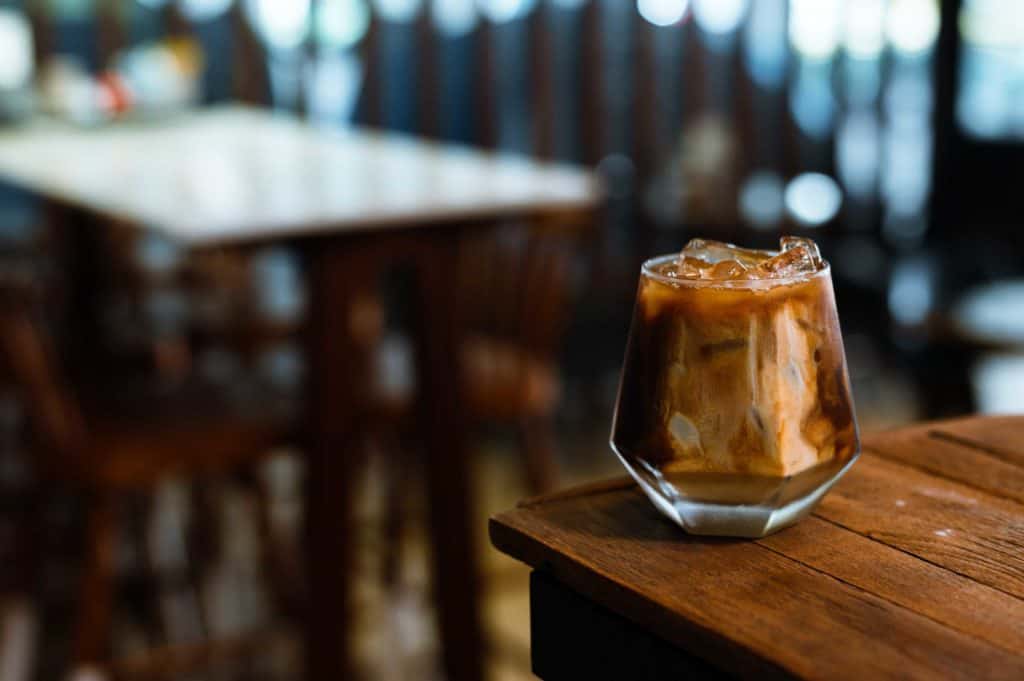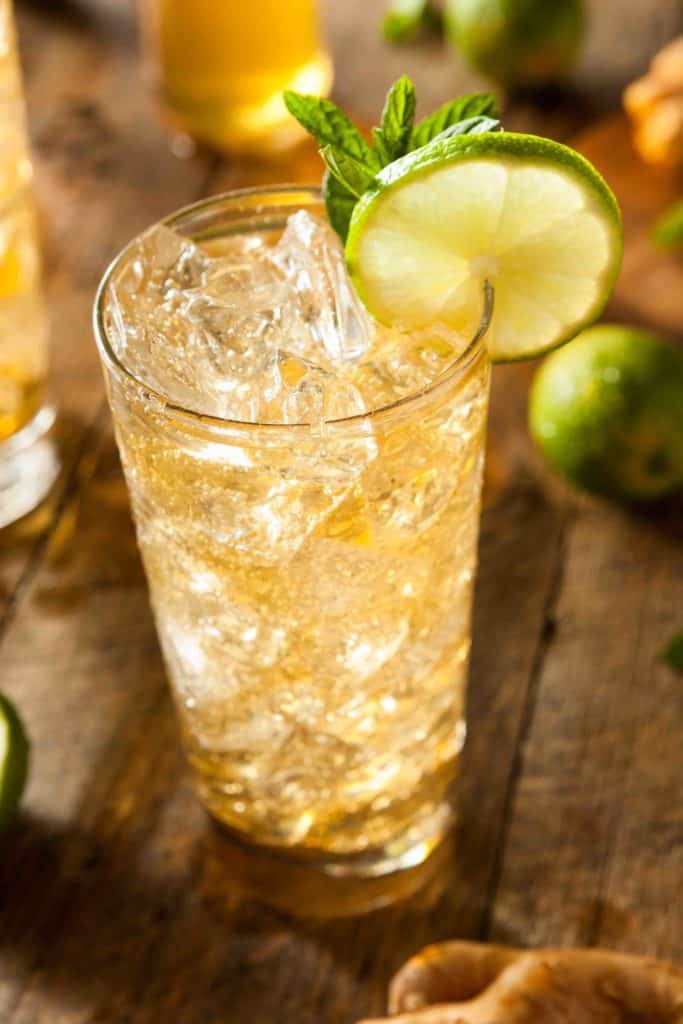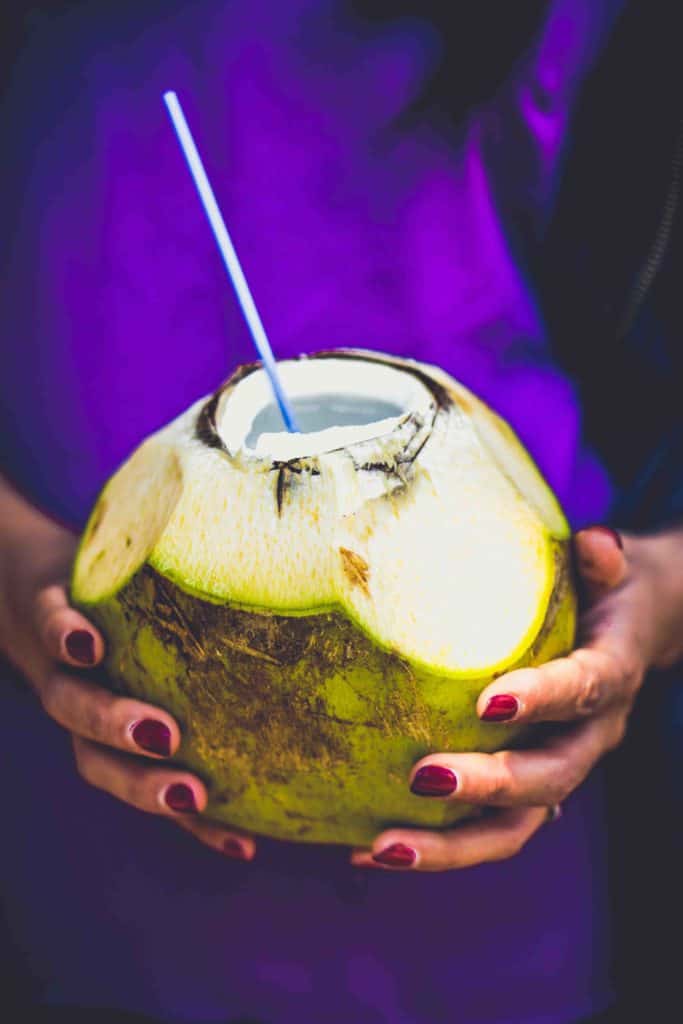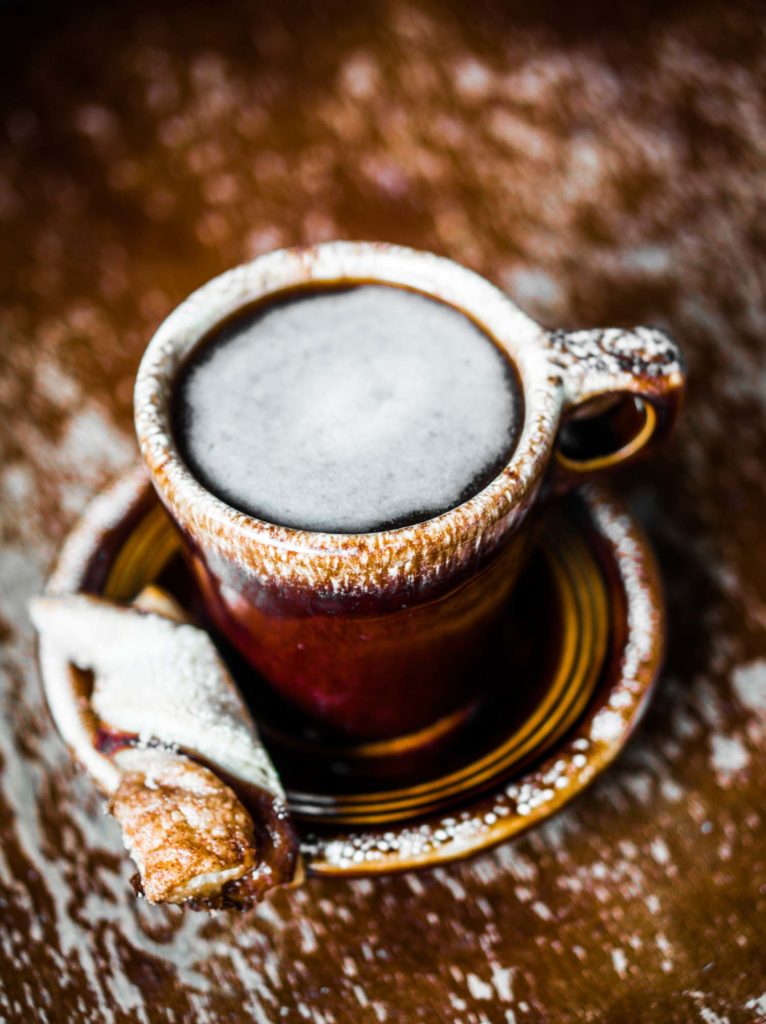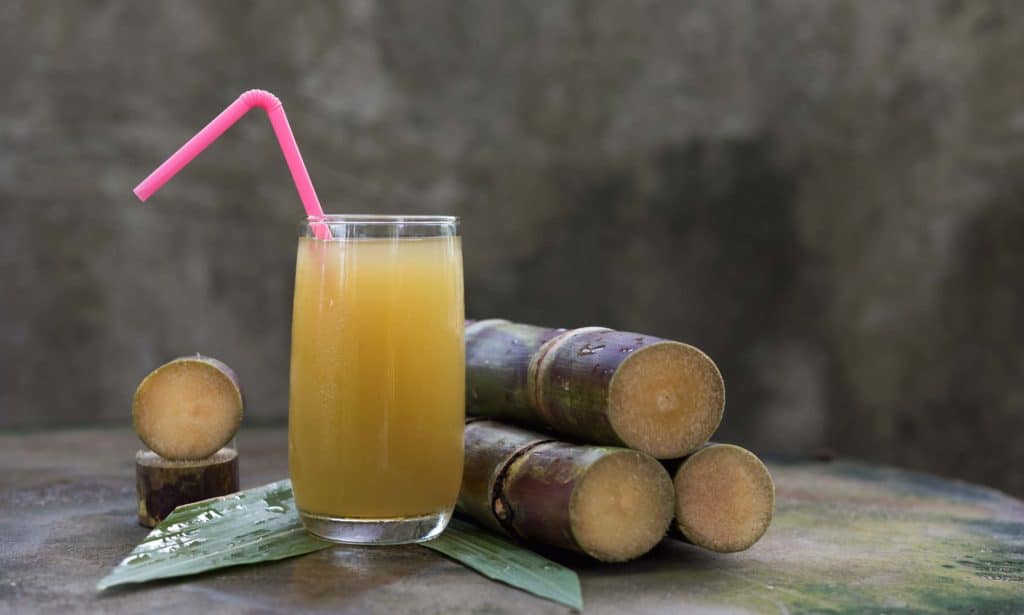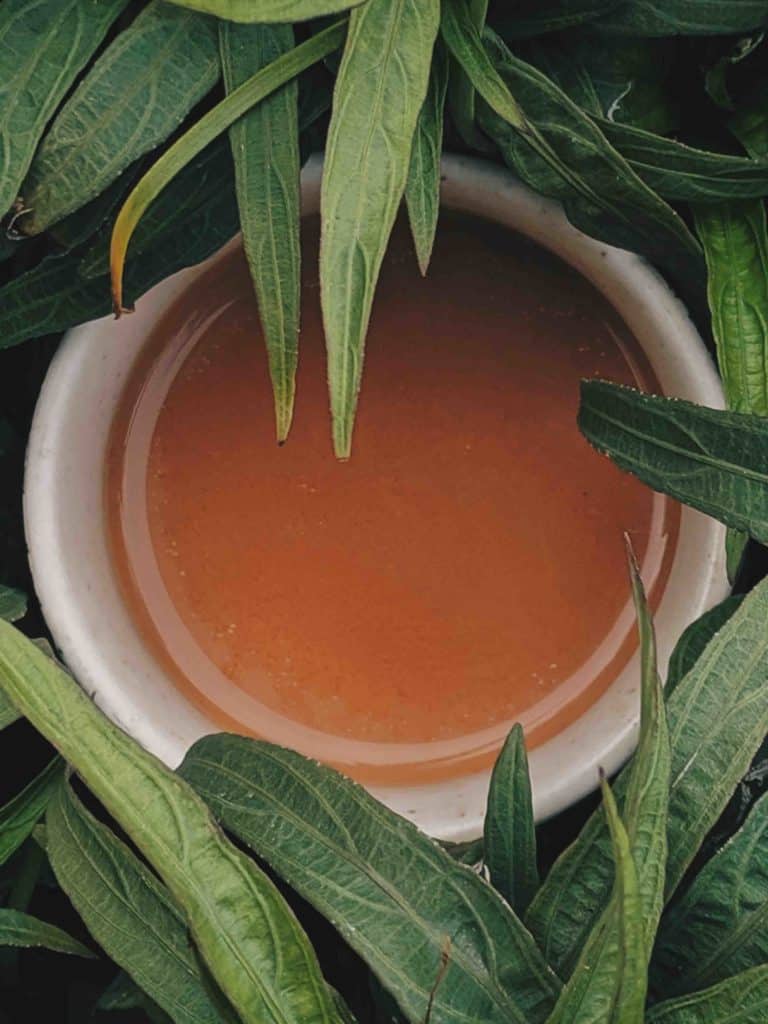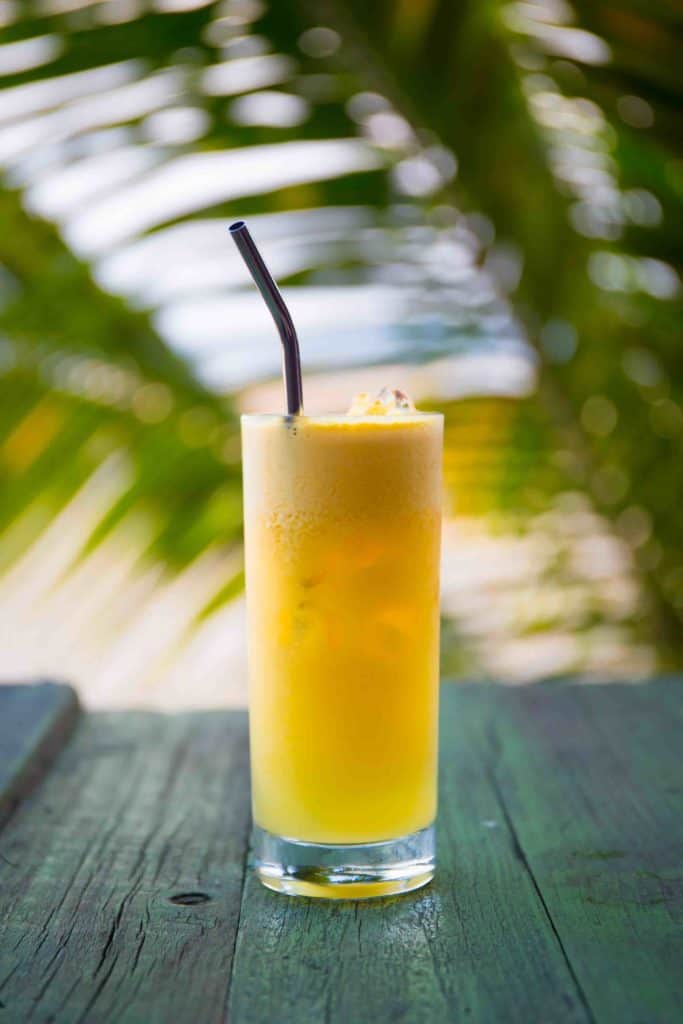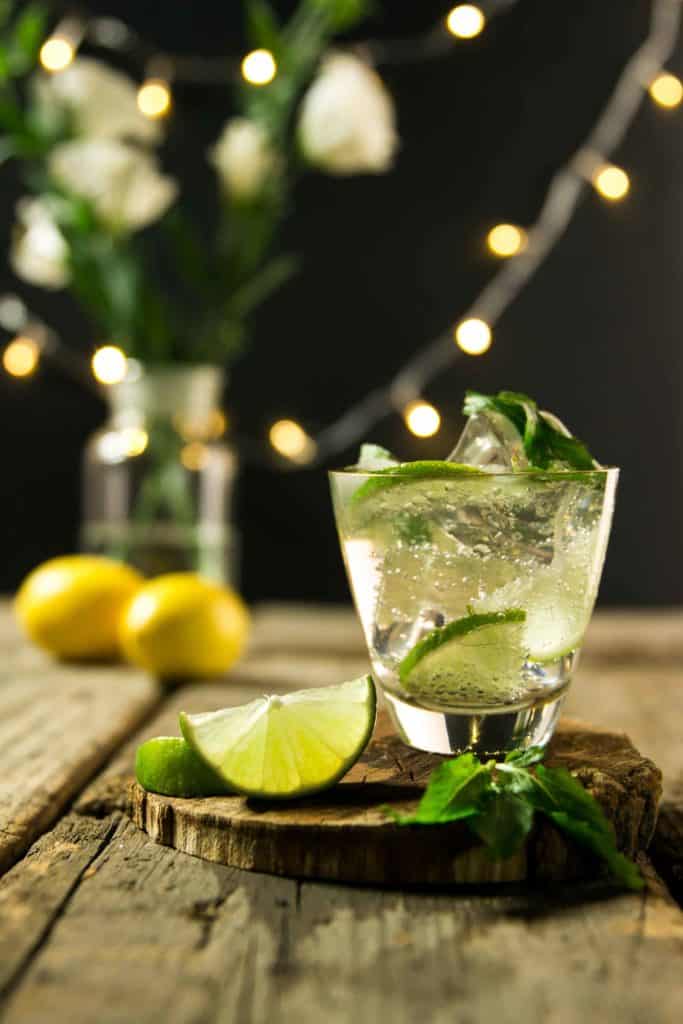A fabulous mix of beer, spirits, cocktails and non-alcoholic Brazilian drinks you’ll love discovering.
A country with beautiful people, fantastic beaches and an unbelievable food scene, you’ll also love these delicious Brazilian drinks.
Brazil is HUGE. It is the largest country in South America and the fifth largest country in the world.
The capital city Brasília feels immense. And it is really just one small part of this country that spans so many different types of landscape from the coast to the Amazon.
Within Brazil cultures can be quite distinct and some have the most unique and unusual drinks.
So if you’re ready to indulge while in Brazil here are 33 alcoholic and non-alcoholic drinks that you should try.
Brazilian Spirits and Liqueurs
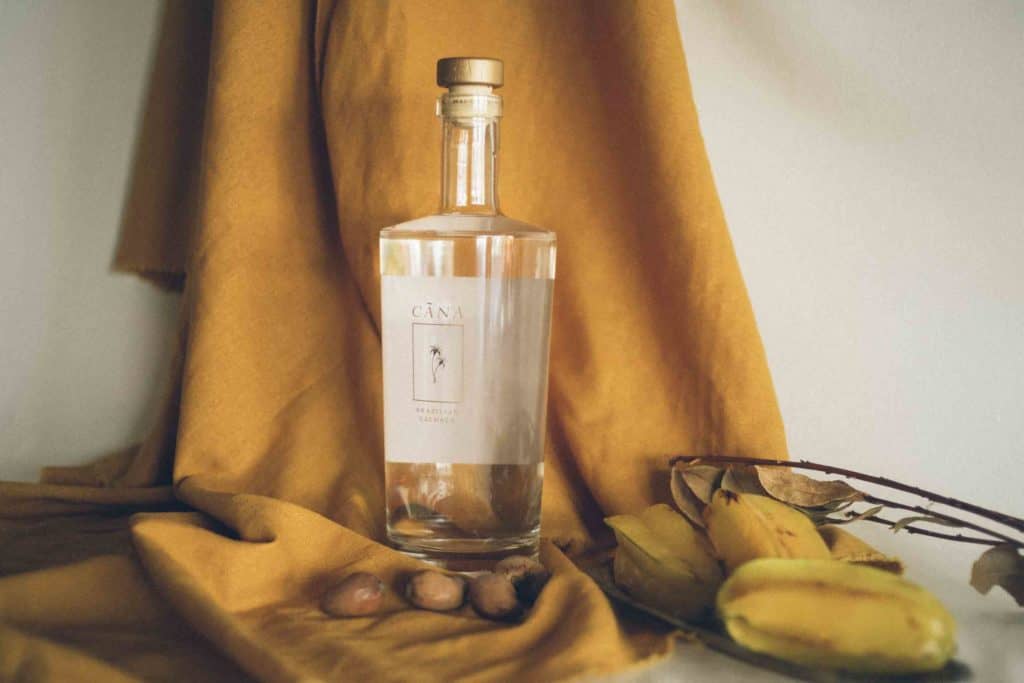
Cachaça
Cachaça, caninha, or pinga is a distilled drink made from fermented sugar cane juice. As the country’s well-loved Brazilian alcohol, cachaça is widely produced throughout Brazil.
And while everyone knows it by its official name you may also see it called pinga or caninha.
The Brazilian spirit is also exclusively produced in Brazil, producing 800 million liters a year. Most drinks in Brazil and cocktails are cachaça-based.
The taste and flavor may differ according to the distillation process and type of wood barrels used. But in general, the freshly pressed sugar cane juice gives cachaça a raw, subtle sweet fruity flavor.
Cachaca can be drunk straight, on the rocks or you can have it as a shot.
Just in case you need any added excuse to drink cachaca, September 13 is National Cachaca Day. June 12 is appointed as International Cachaça Day.
If you think this sounds similar to guaro, one of the most popular Costa Rican drinks, you’re absolutely right!
Xiboquinha
Xiboquinha is a Brazilian drink made from sugar cane juice. Based on cachaça, Xiboquinha is added with ginger, cinnamon, honey, lime juice and herbs for that sweet and aromatic taste.
Even now today, Xiboquinha is produced the traditional way.
This Brazil drink is an important part of forro, a music and dance party in the Northeastern Region of Brazil.
It is also the official drink of forro for its aphrodisiac and energy-boosting ingredients.
Xiboquinha may be one of the most popular drinks in Brazil but the good kind can be hard to find for travelers.
Although it is commercially produced Xiboquinha is available, locals don’t like it as much so you have to ask around for the local drink.
If you want to try the high quality Xiboquinha, you should travel to Brazil, in the northeast region in June when it is most readily available.
Catuaba
The name catuaba is derived from the plant’s name which has been used for centuries due to its health benefits.
From being consumed as herbal infusion by the Tupi people, catuaba is now one of the country’s most imbibed liquors.
Catuaba is mainly made of fermented sugar cane juice infused with native plants like guarana, marapuama, and spices.
Also, fermented apple juice is added for sweetness. Catuaba has a balanced flavor with a fruity aroma.
But do not fall too hard for its pleasant and smooth taste though or you will have to deal with that hangover the next day.
Catuaba is widely sold in Brazil. Your trip to Brazil will never be complete without having a taste of this ancient recipe.
Aromatized and added with a modern twist, catuaba has captured the younger Brazilian generation.
Brazilian Alcoholic Drinks
Caipirinha – Brazil’s National Drink
Caipirinha is Brazil’s national cocktail made with cachaça, lime and sugar.
It is the most popular drink in Brazil and is essential to Brazil’s identity, the same as soccer and samba.
What was served initially as a home remedy to illness is now a well-loved Brazil national drink.
Brazilian cocktail caipirinha is easy to prepare and only needs three ingredients: lime, sugar and cachaça.
But the preparation needs muddling to release the lime juice and the aromatic oils from the lime peel. But Caipirinha can be drunk as is because it is naturally delicious.
Brazilian caipirinha tastes like the sweet fruit lime with a hint of grassy and funky flavor. Drinking caipirinha will remind you of the world famous soft drink and Brazilian drink soda – coke.
Macunaíma
Like Caipirinha and other drinks in Brazil, Macunaíma is cachaca-based. The cocktail is named after the famous novel Macunaíma by Mario de Andrade.
To make a macunaíma cocktail, mix cachaça, freshly squeezed lemon juice (or lime juice), sugar syrup and ice cubes and shake.
It is most often strained into a chilled glass or traditional Brazilian glass called barriquinha, which is similar to an Old Fashioned glass, with no garnish.
But you can also find it in different glasses and may have a garnish.
Macunaíma is sweet with a taste of tartness, which makes it a great choice in alcoholic beverages for starters.
The drink is one of the most popular Brazilian beverages which came to be a staple in Brazilian bars.
.Cobogó
Brazil is not only home to fantastic Brazilian dishes. It is home to Brazil drinks and beverages that will let you experience the authentic Brazilian lifestyle.
Cobogó is a cachaça-based cocktail mixed with turmeric, lime, jabuticaba and a pinch of salt.
Jabuticaba is a is a purplish-black fruit that’s somewhat similar to mangosteen.
It’s often made into a jam and adds to the sweet flavor of the cobogó drink.
The sweetness of jabuticaba perfectly blends with the coffee, spicy and grassy flavor of cachaça. Balanced with a little saltiness, cobogó is unique, pleasing and addictive.
Brazilian Beer
Brazil is the world’s third-biggest beer market next to the United States and China. Brazilian alcohol brands are not only limited to cachaca and rum.
The most popular Brazilian drink names for beer are Nova Schin, Antarctica, Brahma and Skol.
Apart from traditional Brazilian drinks, beer is the most competitive alcoholic drink in the country.
Depending on Brazilian alcohol brands, their taste vary widely. One brand taste’s slightly bitter with a mild flavor and hop aroma.
A certain brand produces Brazilian beer with hints of vanilla, coffee and chocolate.
Brazilians like their beer ice cold. Beers are put in the fridge hours before gatherings get started, enough to reach the right coldness for the Brazilians’ taste.
When you visit Brazil especially during the carnival, drinks in Brazil are overflowing and beer is widely sold.
If you as nicely you may be able to convince someone to make you a Mexican chelada beer.
.Axé de Fala
This alcoholic beverage is the most popular Brazilian drinks in the northeast region, particularly during the week-long Brazilian carnival.
Axé de Fala is a pre-made drink made of low-quality cachaça, cloves, honey, guarana powder, cinnamon and other secret herbs.
Axé de Fala is sweet and flavorful that you cannot resist drinking some more.
But then again, be careful with this Brazilian drink as the sugar masks the alcohol and you can drink too much.
Vinho Quente
Mulled wine is a traditional Brazilian drink that has been around for centuries.
Vinho Quente is a mixture of red wine, spices and fruits, a delightful alternative to Brazilian tea or coffee.
Vinho Quente is widely consumed during the cold months and June festival in Brazil – Festas Juninas.
The traditional Vinho Quente only consists of red wine, cinnamon sticks, cloves, slices of orange and tablespoons of sugar.
Other versions include the basic ingredients added with slices of pineapple, apple and raisins.
Another variety has wedges of plum, peppercorns, pinch of salt, lemon, allspices and cardamoms.
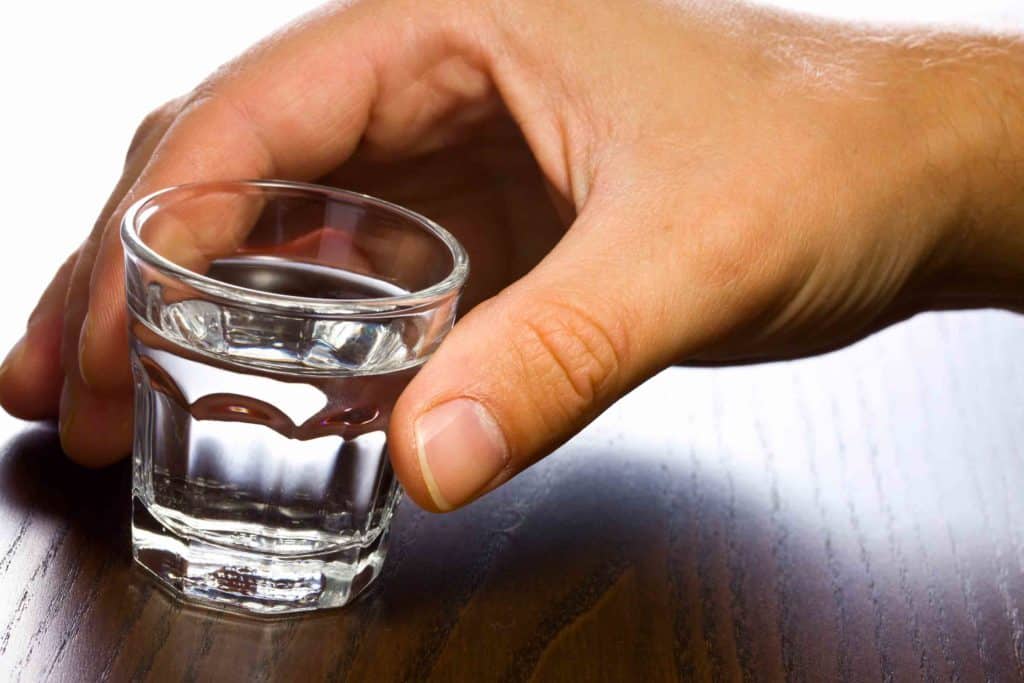
Porradinha
Porradinha is simple but a big hit among young students and foreigners visiting Brazil. This alcoholic drink is basically a glass of cachaça and soda.
Fill half a small cup of cachaça then add a little club soda . You slam it like a shot on the table and the soda begins to fizz and you chug or shoot it.
Be careful with its intoxicating effect though.
Leite de Onça
Leite de onça, a Brazil drink is another Festas Juninas favorite. It may look like Cuban crema de vie but there is no egg.
It mainly consists of cachaça, milk and crème de cacao blended then poured into a chilled glass or mug.
Sprinkle with chocolate or cinnamon powder as garnish at the same time highlight the booze and the cream flavor.
The ingredients perfectly complement each other. Leite de onça is luscious, creamy and not overly sweet that you can pair it with berry desserts or custards.
But do not get misled by its creamy look because drinking too many will get you drunk.
Quentão
Quentão is somewhat similar to mulled wine or vinho quente.
But instead of red wine, quentão is made of cachaça, fresh apples, ginger, cloves, sugar, cinnamon and water.
Quentão is a winter traditional cocktail especially in the coldest regions of Brazil.
But it is also a popular and cozy drink during Festas Juninas’ gatherings. The combination of caramelized apples and ingredients emanate that irresistible sweet and spicy scent.
In Chile, it is called candola, svařené vino in Czech Republic, and varené vino in Slovakia.
Italy’s version is called vin brulé, vin fiert in Romania and Moldova, vin fiert in Serbia, Macedonia and Croatia.
Cauim
Cauim is part of the traditional alcoholic drinks in Brazil mainly made of the fermented root of manioc, also known as cassava or yucca.
It’s a fermented beverage, similar to the Peruvian drink chicha. And can also be made from plantain, corn, rice or even peanuts.
But traditionally it is manioc aka cassava or yuca depending on where you live in the world.
The process starts by cooking the base ingredient. Then women cauim makers chew the cooked starchy base, their saliva helps with the fermentation process.
If the chewing or saliva is a deal breaker for you, there’s also a commercial product made by a Brazilian brewery, Colorado Cervejaria.
Cauim is also a common commodity among the Kuna People of Panama. It is also well known in other countries like Peru and Spain.
Rabo de Galo
This tasty cocktail which is also called, “tail of the rooster” is a combination of cachaça and sweet vermouth or bitter Cynar.
The preparation and composite may seem basic but Rabo de Galo is the second most popular Brazil drinks (cocktail).
But Rabo de Galo can be made in different ways, in different ratios and served in different glassware, depending on one’s preference.
Garnished with orange peel or not, rabo de galo’s bittersweet taste remains a perfect balance to cachaça’s earthy flavor.
Batida
Batida is an alcoholic Brazil drink or smoothie, a mix of cachaça, loads of sugar, fruit and ice. Batida is common in kiosks along Brazilian beaches.
Some of the famous fruits that can be mixed in batida include: strawberry, coconut, lemon and passion fruit.
Other exotic fruits choices are peach, watermelon, honey and apricot.
Although most Brazilian drinks are cachaça-based, vodka can also be used in batida.
The drink can also be added with condensed milk or sour cream depending on your preference.
.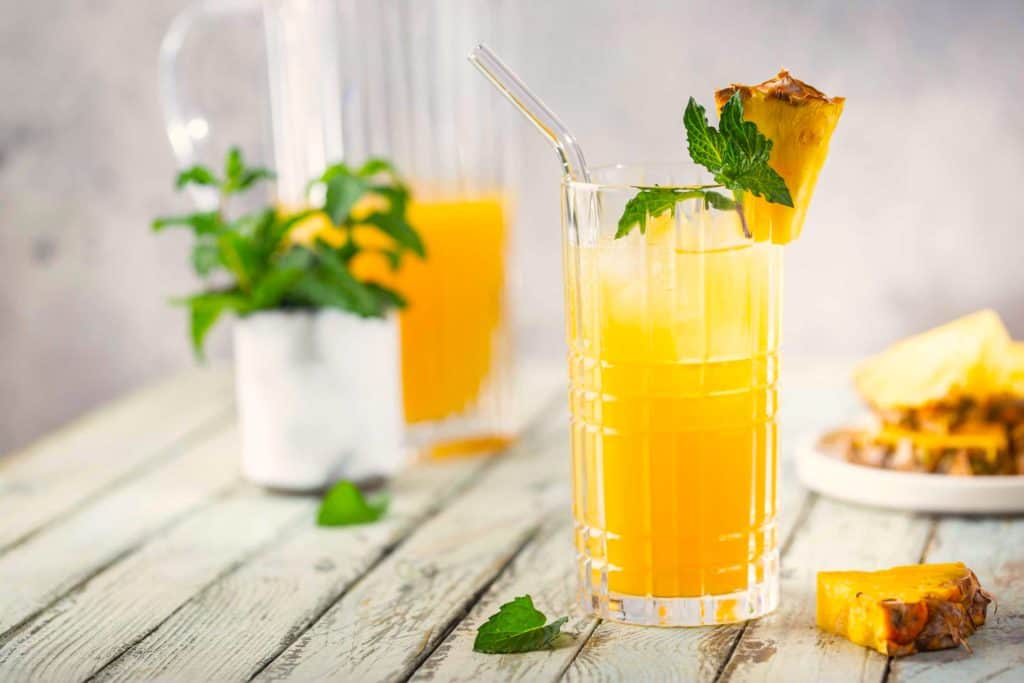
Aluá
Brazilians were believed to prepare Aluá even before the Portuguese came.
The traditional beverage is often made for gatherings and festivities including Festas Juninas.
Aluá is usually made of fermented crushed corn, mixed with ginger roots, water and brown sugar.
But the recipes differ depending on the region of Brazil where one famous main ingredient is pineapple.
If you are up for Brazilian drinks recipes non alcoholic, it is best to drink Aluá a day or two from fermentation.
The length of fermentation will affect the flavor and sourness of aluá. Drinks in Brazil like aluá become more alcoholic if kept in the jar for a longer period.
Cajuzinho or Caju Amigo
Although cajuzinho is a Brazilian dessert, it’s also a Brazilian drink.
Mix a part of cachaça and cashew juice and you will now have this Brazilian cocktail – cajuzinho.
Traditionally both ingredients are mixed in a shot glass without ice and served with cashew on the side. Although now you can also find it served as a traditional cocktail.
In other parts of Brazil, cajuzinho is best enjoyed with a slice of cashew in the mouth and a pinch of salt, munched without swallowing.
Followed by a shot of cachaça, the drinker will then swallow the cashew and cocktail at the same time.
Caju amigo or little cashew, this Brazilian drink is not your typical drink. It is tasty, sweet, and will instantly remind you of the tropics.
.Caipiroska
Caipiroska is the vodka-based version of Brazilian caipirinha. Mix vodka, lime and sugar in a shaker, then muddle to extract the oil from the lime peels.
Add the crushed ice, shake until chilled. Pour in a chilled glass and garnish with quarter limes.
Caipiroska is light on ingredients, delectable, fruity and tangy. It can also be prepared with other fruits (fresh or syrup).
You can also adjust the sweetness to soften the sourness. Caipiroska, a Brazil drink is also popular in Argentina and Paraguay.
Bloody Carioca
Bloody carioca is Brazil’s version of Bloody Mary. It’s made from cachaca, lemon juice, tomato juice, black pepper, nutmeg, cayenne pepper, onion powder, celery salt, and Worcestershire sauce.
To prepare, just mix everything in a cocktail shaker with ice.
Pour the mixture in a high glass (with rim dipped in paprika) and garnish with sliced cucumber.
Bloody carioca is spicy due to the number of spices added.
If this appeals to you try Canada’s version called the Caesar drink or the Mexican Michelada.
.Capeta
Capeta, is the devil drink, in fact it literally means devil. It is very popular in Northern Brazil and is synonymous with the Brazilian carnival.
The classic recipe uses cachaça, powdered guarana, condensed milk and honey. It may also be topped with cocoa, cinnamon
However, you’ll find some people are also taking it up a notch by incorporating powdered guaraná, sweetened condensed milk, cocoa, honey, vodka and cinnamon.
If you like a White Russian, this is the drink for you.

Brazilian Drinks Non Alcoholic
Chimarrão / Brazilian Yerba Mate
Chimarrão has been consumed by the Tupi and Guarani people of South America before the Europeans.
What used to be consumed to cleanse and heal the spirit is now enjoyed in Brazil as a social ritual drink.
The caffeinated drink is traditionally drunk in mate gourd (cuia).
The taste varies depending on the harvest, brand, how it is prepared and the temperature of water used.
For the younger generation, yerba mate is now consumed as iced tea in different parts of Brazil.
Mate is also widely sold on Brazilian beaches.
.Tererê / Cold Yerba Mate
Tererê is a bitter tea. It is an infusion of Yerba Mate but is prepared using cold water.
This was originally consumed by the Guarani people to refresh the body due to the hot climate in the region.
Tererê is commonly prepared by adding medicinal herbs, infused with fruit juices like pineapple, lemon, orange, or lime.
Tererê with fruit juice is called tereré de jugo in Argentina, tereré de jugo in Paraguay.
Although coffee is the number 1 most loved on the list of Brazil drinks, tereré is also very popular in some regions.
Guaraná Juice
Guarana is widely grown in Brazil and has proven to have multiple benefits.
Guaraná juice is used in herbal teas, natural sweeteners for soda and energy drinks around the world from Red Bull to Monster.
Consuming guaraná juice is believed to be effective in weight loss, has antioxidants, antifungal, antibacterial and improves cognitive performance.
Guaraná juice has a sweet flavor with a tinge of apple and ginger ale.
Guaraná Antartica
The name guaraná is derived from the Amazonian berry, believed to be a natural energy booster.
The berry is also the core ingredient of Brazil’s national soft drink brand, Guaraná Antartica.
Sweetened with 100% sugar cane plus guaraná berries, Guaraná Antartica is naturally refreshing with a smooth and invigorating flavor.
.Agua de Coco / Coconut Water
Coconut water is a naturally sweet and hydrating drink that is common in tropical countries like Brazil.
Agua de coco is easily accessible and available most especially along the streets and beaches of Brazil.
The water can be sipped directly out from the coconut through the small cut made by the vendor.
Café / Coffee
Start your day with a Brazilian coffee and added with a spoonful of sugar.
Brazilian coffee is the world’s third most consumed coffee. Did you know that Brazil is also the third top coffee producer in the world?
No wonder why coffee is the most consumed beverage in the country.
The coffee quality depends on where it is from, where you buy it, or how you like/drink it. But high quality coffee beans are sold in high end coffee shops.
If you’re lucky they may make it in the style of Cuban coffee.
.Aana de Açúcar / Sugar Cane Juice
Sugar cane juice is extracted from pressed sugarcane commonly consumed in Latin America, Southeast Asia and South Africa.
It is used in some Brazilian drinks like xiboquinha and cachaca to name a few.
Sugar cane juice in Brazil is widely sold by street vendors and you can find it at the Sao Paulo market.
It is often mixed with pineapple or lemon juice to enhance the flavor.
It is also known as guarapo in Ecuador and is one of the most common Ecuadorian drinks.
Vitamina / Smoothie
Natural Brazilian drinks like Vitamina are best consumed in the morning because of their natural health benefits.
Vitamina is a drink for health conscious individuals as this can be made without sugar.
Blend fruit with granola, milk and sugar and you already have a healthy and energizing food to start your day.
.Mate Leão
Mate Leão is a known yerba mate tea brand owned by The Coca-Cola Company. The brand offers over a hundred infusions that Brazilians can choose from.
From Matte Leão concentrate in a bottle to tea bags to ready-to-drink cups, Matte Leão became Brazil’s favorite infusion brand.
Infusion flavors available are lemon, chamomile, lemongrass, grass candy, tropical, orchard, Silvestre, chocolate, caramel, cinnamon, and more.
Chá de Ayhuasca / Ayhuasca Tea
Chá de ayhuasca is a Brazilian tea made from the leaves of psychotria viridis that grows in the Amazon jungle.
Ayhuasca tea has been used by the ancient people in the Amazon for religious and spiritual purposes.
It’s most often associated as one of the psychedelic Peruvian drinks but it’s used in many Indigenous communities throughout South America.
And today, chá de ayhuasca has become a worldwide name because of its therapeutic benefits.
.Suco de Cupuaçu / Cupuaçu Juice
Suco de Cupuaçu comes from the native Brazilian fruit called cupuaçu. The fruit is the cousin of the cacao fruit that has a chocolate flavor.
Cupuaçu juice is thick with hints of pineapple or melon taste. The fruit itself is considered a super fruit and said to have large nutritional values.
Cajuína / Cashew Apple Juice
Cashew apple juice is made from blended cashew apples which are packed with vitamin C, antioxidant and magnesium.
The juice is also low in cholesterol with no sugar making it an ideal beverage for diabetic patients.
Cajuína has an exotic taste, naturally sweet, slightly bitter contributing to the juice’s acrid taste.
.Limonada Suíça / Swiss Lemonade
Limonada Suíça, the last on the list of non-alcoholic Brazilian drinks is Brazilian lemonade.
It is made of blended limes, sugar, ice, sweetened condensed milk and water.
The creamy Brazilian lemonade is the perfect drink for beach outings and summer gatherings. The drink is frothy, sweet and refreshing.
The name Swiss lemonade is curiously named this way because Brazil once imported condensed milk from Switzerland.
